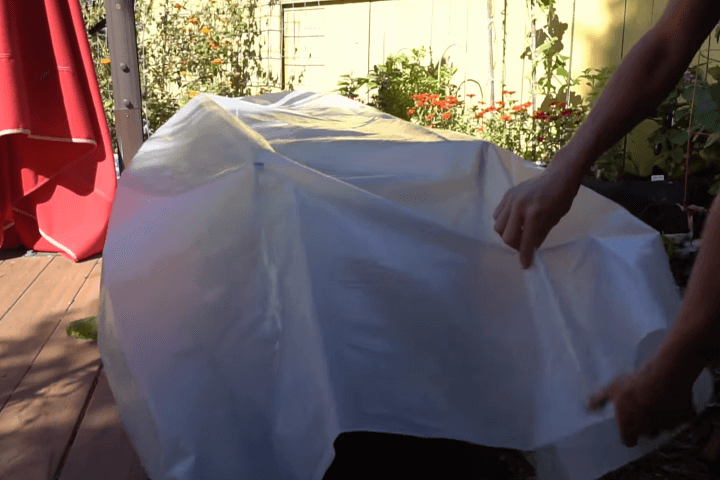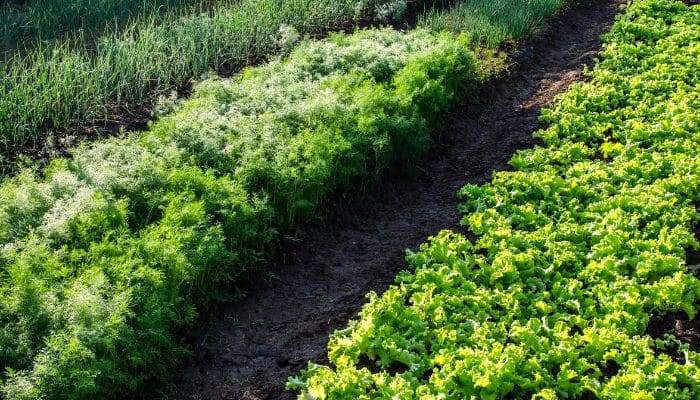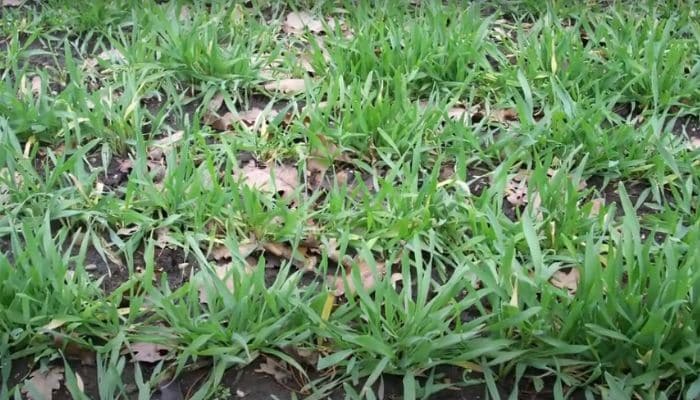You should definitely cover your vegetable garden for winter. Winter is the toughest season for the garden and you should definitely give some protection to your plants and soil. You need to cover your garden to protect it from winter rain, frost, and freezing.
During the time of frosting, many plants get injured. So don’t wait for the winter to come and ruin your garden. You better prepare your garden for winter.
If you are new to gardening and don’t know how to cover your garden, here I am to help you in this matter.
So, relax and let’s find out what you can do. Let’s dig in deeper!

Table of Contents
When should I cover my vegetable garden?
Many of you may think now when should I cover my vegetable garden? At the beginning of winter? In the middle of the winter? Oh, this may seem too confusing, right?
Don’t worry, for clearing all the confusion, I am adding a chart here. That chart will represent the lowest tolerable temperature of some veggies.
So let’s take a look.
| Vegetable | Temperature (F) |
|---|---|
| Artichoke, Beans, Beets (tops), Celery, Pumpkins | 31 – 32 |
| Asparagus | 30 – 31 |
| Beets (roots), Broccoli, Okra | 29 – 30 |
| Cabbage | 26 – 28 |
| Carrots, Peas, Potato tubers | 28 – 30 |
| Cauliflower, Kale | 27 – 29 |
| Cucumber, Radishes, Spinach, Squash (winter) | 30 – 32 |
| Squash (summer) | 31 – 33 |
| Sweet corn, Sweet potatoes | 32 -33 |
| Tomatoes | 32 – 34 |
So according to the tolerance level of the veggies, you need to give them protection during the time of frosting.
Frost protection is needed to protect tender plants like tomatoes, eggplant, pepper, beans, cucumbers, sweet corn, and squash. If you can’t protect these tender plants, then harvest them as early as possible.
The root crops like beets, carrots, and potatoes will withstand a light frost. Also, the cold season crops like cabbage, Swiss chard, broccoli, onions, parsley, peas, radish, spinach, turnips, and Brussels sprouts withstand a hard frost.
So, based on the weather forecasting, you need to give coverage to your garden. Keep a close look at the frost dates during the cold months.
Note: On weather sites, many frost dates are based on a 50% chance of frost. However, as a gardener, you should look at a 30% chance of frost. After all, you must not want your plant to die because of frosting.
What you can do for covering the garden?

So, now you know that you need to protect the garden during frost times. But have you thought that what are you going to do for the protection?
Well, you can use physical covers like plastic, and fabrics, for covering plants with organic materials like straw mulch, and leaf mold, covering the soil and underground veggies, or plant winter cover crops for saving the garden soil in the cold months.
Here is a chart of the coverage products that you can use to cover the garden.
Let’s take a look.
| Product name | Product type | Usage | Extra note |
|---|---|---|---|
| Bedsheets, Drop Cloths, Blankets, Polythene covers, Plastic sheets, row covers | Physical cover | Cover the perennial plants | Used for giving protection during frost times by covering the plants. Don’t let the cover touch the plant leaves. |
| Old carpet, Layer of cardboard, Black Plastic | Winter crops | Cover the perennial plants | Used for covering the ground to prevent weeds. |
| Mustard, Corn salads, Mache, Clover, Field peas, Fava beans, Vetch | Organic matter | Cover the ground | Planted in the ground for giving protection during frost times |
| Straw mulch, Wood mulch, Shredded leaf mulch, Leaf mold, Pine needles, Grass clippings, Kitchen waste, Newspaper mulch | Organic matter | Cover the ground | Planted them for providing nitrogen to the plants. |
| Inorganic mulch | Organic matter | Cover the ground | Applied them for preventing weeds as well as providing nutrition during the winter weather. These organic matters are also known as winter mulch. |
So, you need to cover your perennial plants and ground during the cold season. Let’s know about the guards one by one.
What you can use to protect the perennial plants?
- Bed sheets, drop cloths, blankets, polythene covers, and plastic sheets can make suitable covers for vulnerable plants. It is easy to create a temporary cover for the perennial plants or annual plants to give them warm air and protection.
- For vegetable gardens, covering with black plastic or a layer of cardboard, or even an old carpet, is another option. Cover the ground with this product for the whole winter months and remove them before spring planting. Your land will also remain good till the spring.
- You can buy “row covers” from your nearby garden center. It will give you better protection.
Note: Drape the plants loosely for proper air circulation. Stake them with bricks or sticks and don’t let the coverage touch the leaves.
Use clean and dry materials to cover the garden. Before covering plants, you can water them lightly.
Apply the cover in the early evening when the winds go down and remove it the next day in the mid-morning to give warm sunlight to your plants.
What you can use to protect the ground?
Well, you need to cover the empty garden space so that the weeds can’t make their habitat there or the soil temperature doesn’t go down and freeze the soil. On the other hand, if you are growing root vegetables, you need to give them protection too, right?
The ground covers will help you to resolve these issues as well as they will also work as soil amendments.
So, let’s know about 5 amazing ground coverage materials that you can use to cover your ground.
1. Winter Cover Crops

These cover crops are also known as green manure. It is basically planted for giving protection against weeds or for improving the soil quality. These crops cover the ground and prevent the soil from erosion during the winter rain or frost. They also prevent the weeds from growing.
The cover crops with deep roots help to improve the soil structure. They break the soil. For example, there is mustard that has lush foliage. By the time the foliage of this plant mixed with soil and works for boosting the organic materials of the soil.
Mustard is good for heavy soil like clay soil. Dig in some of this cover crop seed before winter so the frost will break the plants instead of the soil. Prolific salads such as mache or corn salad can also be grown in this way.
However, some cover crops add nutrients to the soil directly by working as a nitrogen fixer through their roots. Winter field peas, fava beans, clover, and vetch are some of them.
These legume-type veggies are great and plant them before the planting of some nitrogen-hungry brassicas like cabbage.
It is good to plant these cover crops in winter as there may be a lacking of nitrogen in the soil during the time of winter.
2. Straw Mulch

Straw mulch provides effective ground coverage in dormant garden beds. It is mainly used in vegetable gardens.
Put a 2-inches thick layer of mulch and it will prevent the weeds from germinating in the empty ground. A thick layer of 4-inches will insulate the soil and protect the tender perennials from temperature fluctuation.
Also, it protects the plant roots from dying because of the cold weather.
3. Wood Mulch

A deep layer of it will help you to insulate the soil as well as keep the weeds away. Wood chips mulch breaks down slowly and so it works well in perennial beds where you basically don’t till in the mulch each year.
As this mulch decomposes slowly, you need to replenish the layer during each fall to maintain the layer of mulch throughout the cold weather.
4. Yard Waste
Yard waste, including grass clippings, pine needles, and shredded leaves, also can provide cover over dormant winter beds. Dry leaves or cut grass can help reduce weeds although these materials decompose quickly and some perennial weeds can penetrate them.
Especially, the shredded leaf mulch can work as insulate over tender perennials. Just apply a 4-inch-deep layer.
Yard waste quickly breaks down into compost and this compost nutrient leaching into the soil improves the soil quality. You can add your kitchen waste to the compost pile too.
5. Inorganic Mulch and Newspaper Mulch
If you want to keep the weeds away and that’s the motive behind using cover, then you can easily choose inorganic mulch. Cover the empty beds with black plastics or traps.
Weeds can’t penetrate them at all and so there will be no weeds during spring planting.
The inorganic winter covers work best for annual vegetable garden beds as the soil beneath the covers receives no moisture and air during winter. Besides, black plastic helps to get the soil warm quickly.
Alternatively, you can use newspaper sheets to cover the garden area for the winter months. It is an organic matter and you can till it into the soil during spring planting.
Few Last Words for You
Should I cover my vegetable garden in winter?
During the month of winter, you need to cover everything if you don’t want frost damage, starting from the garden to bed.
Besides, if you want to keep your garden space free from weeds or weed seeds for next summer or spring planting, you need to cover the garden soil.
You can add physical cover for covering the plants. You can use winter mulch to cover the garden soil for increasing soil nutrients, reduce soil erosion, and getting healthy plants for the next gardening season.
So, give your garden winter preparation by covering the ground, plants, or bed for winter.
Happy gardening!
